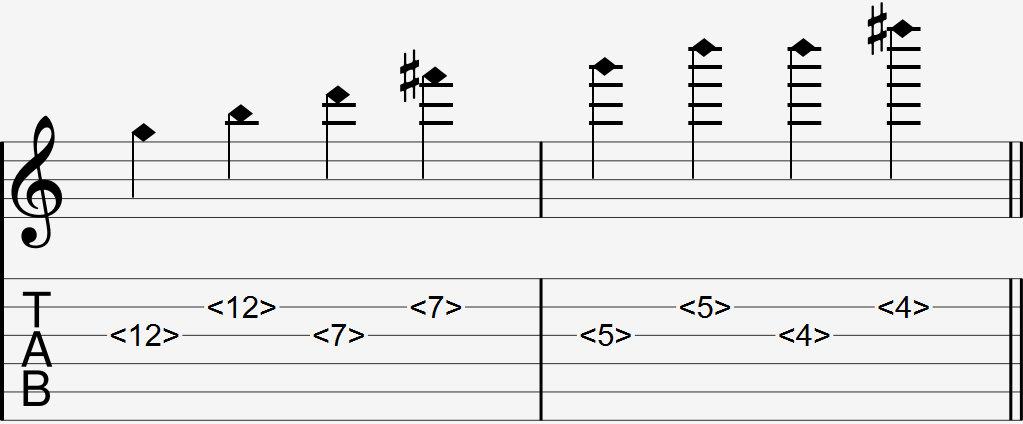Guitardex
Natural Harmonic
Required: None
easytechnique
Harmonics


The natural harmonic is notated in chevron brackets <>, sometimes with N.H. written above it. If the N.H. extends to multiple notes in a row with a dashed line, all those notes are natural harmonics.
Explanation
A natural harmonic is played by gently touching (not pressing down on) the string directly above the fret wire. Using your left hand, touch the string directly above the fret wire and pick with your right hand.
This technique is used to get chime-like tone, to substitute for a regular picked note, and to keep a note ringing without holding the string down.
Common Harmonic Frets
Theoretically, there is a harmonic at the integer divisors of the string length. When playing guitar, you will commonly see up to 1/4, and sometimes see 1/5 and 1/6. Smaller divisors are very rarely used. The parentheses () show the intervals of the harmonic note when compared to the open string.
- 1/2 = <12> (Octave)
- 1/3 = <7> <19> (Octave + 5th)
- 1/4 = <5> <24> (2 Octaves)
- 1/5 = <4> <9> <16> <28> (2 Octaves + 3rd)
- 1/6 = <3.2> <30> (2 Octaves + 5th)
The smaller string divisor you play a harmonic on, the less audible it will be.
Getting a clean sound
Taking the finger off the string the moment you pick it can improve note clarity.
While getting a clean harmonic sound should not be an issue when picking in your usual position, picking near the bridge will improve the clarity.
FAQ
Why is my harmonic not directly above the fret wire?
If you're trying to play, for example, a <12> harmonic but it is most clear when played somewhere to the left or right of the 12th fret wire, then your intonation is not set up correctly. A bad intonation means that your guitar's fretted notes don't actually produce the note as accurately as they should, and the notes become more out of tune the higher you fret.